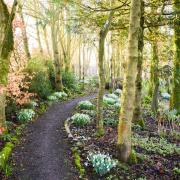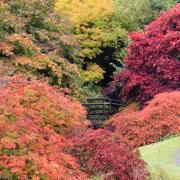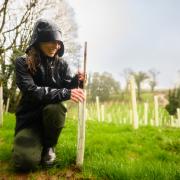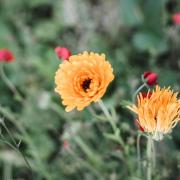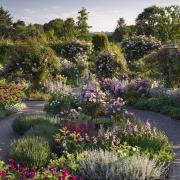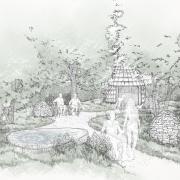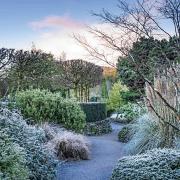As the first shoots of spring start to appear, our Gardening Writer GILL HEAVENS welcomes a consistently beautiful - and reliable - arrival in our gardens

In his book The English Flower Garden published in 1883 William Robinson said of hellebores: “They are the most effective, sturdy, impressive plants for opening the gardening year with, often blooming abundantly at the dawn of spring…” Mr Robinson, champion of the natural garden, certainly knew what he was taking about. This springtime wonder is not only long flowering, it also acts as an attractive ground cover and provides excellent cut flowers and foliage for the flower arranger. If you haven’t yet discovered the joy of the hellebore then I hope you are prepared to be converted.
They are members of the Ranunculaceae, or Buttercup family consisting of around 20 species which are native to both Europe and Asia. The Latin name, Helleborus, comes from the Greek “helein” to injure and “bora” meaning food, undoubtedly referring to its poisonous nature. An ancient name for the plant is Melampodium, named after the goatherd Melampus who gave it to the daughters of the Proetus, mythical King of Argos, to cure their insanity. This is not to be recommended as all of the plant is considered toxic, containing the caustic protoanemonin amongst other things (I hope you are paying attention there is a test later!). Due to the purgative powers this poison brings, it was previously used to initiate vomiting or sometimes (scarily) to treat children with worms. Another fascinating “fact” I have come across is that if you stand on the powdered root it will render you invisible; now that might come in very useful!

One of the earliest hellebores to flower is the Christmas Rose or black hellebore, Helleborus niger. The “black” refers to the root and not the flowers, which are snowy white and held above evergreen glossy leaves. If it is feeling generous you will have Yuletide blooms, if not they won’t be far behind and it will continue to flower until early spring. The not so glamorous sounding Stinking Hellebore, Helleborus foetidus, is one of our native species and is so called because when crushed the foliage is stinky! My advice would be to avoid any crushing. Mr Smelly redeems himself with clusters of subtle green flowers from mid-winter until mid-spring. What it lacks in colour and perfume it makes up for in its ability to thrive in the “always tricky to fill” dry shade areas of the garden.
In contrast to the noxious, we have the Fragrant Hellebore or Helleborus odorus which has a strong sweet aroma emanating from its understated pale green flowers. For those of you who demand a little more colour there is a golden leaved cultivar “Gold Bullion” and the red stemmed Wester Flisk Group. Another garden favourite is the Lenten Rose, Helleborus orientalis, which flowers slightly later than its Christmas cousin, its usual white flowers fade to pink. The Corsican Hellebore, Helleborus argutifolius, grows to 1m high with lime green flowers and, much paler when grown in full sun, grey/green toothed foliage.

As well as these species there are a wealth of hybrids available to the gardener. The Royal Horticultural Society lists almost 900 in its Plant Finder. These come in a variety of flower types (see below) and colours ranging from whites, pinks, purples, spotted and even a pale yellow. Attractive foliage makes them a hard-working member of the garden community, from the metallic shine of Helleborus x sternii “Silver Dollar” to the glossy yellow veined leaves of the Helleborus orientalis “Penny’s Pink”.
Much has been written about the hellebore’s reluctance to hold its head up high. Whilst photographers scramble about in the mud cursing its demeanour, plant breeders are doing their best to bring us less bashful cultivars. However, there is a lot to be said about the beauty of its posterior and surely bending down to gently raise the face of a hellebore is one of spring’s highlights? Esteemed garden writer and gardener Vita Sackville West said of hellebores: “They will fill up many an odd corner; their demands are few; and they will give flowers at a time of year when flowers are scarce.” Well if they are good enough for VSW then they are certainly good enough for me. I hope you will agree!








